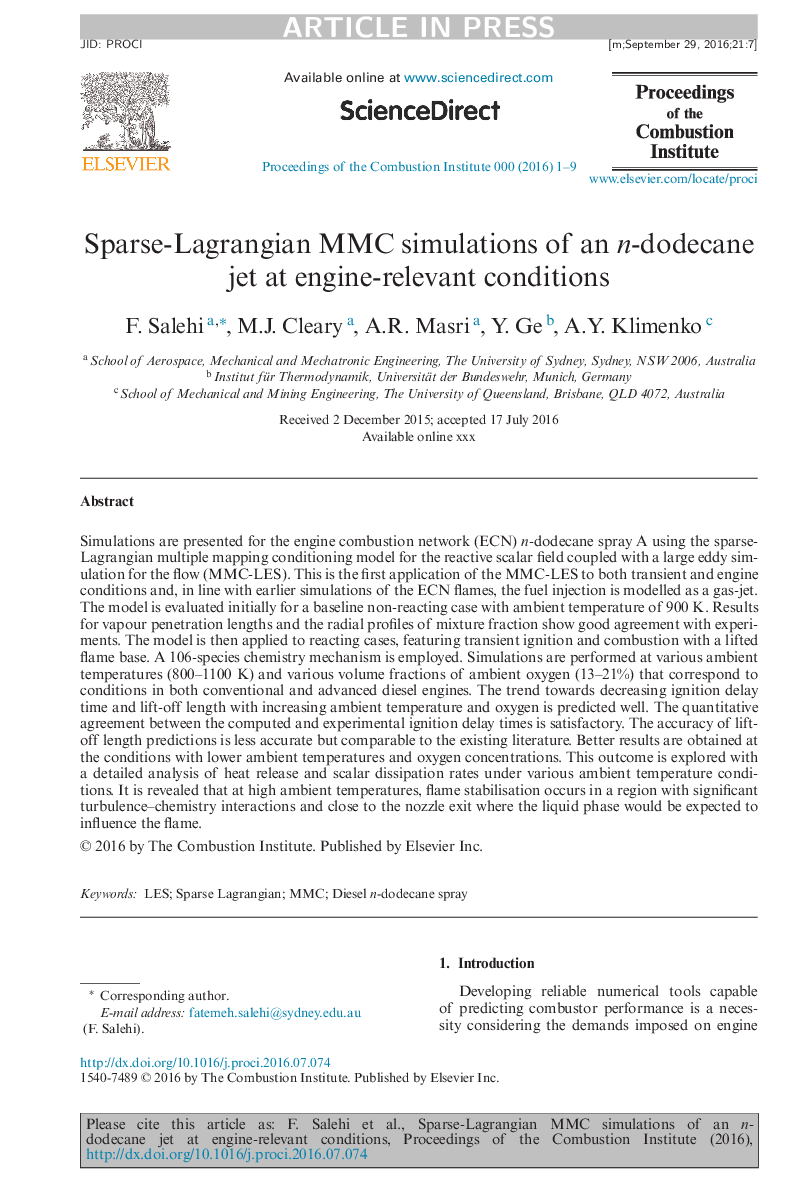| کد مقاله | کد نشریه | سال انتشار | مقاله انگلیسی | نسخه تمام متن |
|---|---|---|---|---|
| 4915413 | 1427915 | 2017 | 9 صفحه PDF | دانلود رایگان |
عنوان انگلیسی مقاله ISI
Sparse-Lagrangian MMC simulations of an n-dodecane jet at engine-relevant conditions
دانلود مقاله + سفارش ترجمه
دانلود مقاله ISI انگلیسی
رایگان برای ایرانیان
موضوعات مرتبط
مهندسی و علوم پایه
مهندسی شیمی
مهندسی شیمی (عمومی)
پیش نمایش صفحه اول مقاله

چکیده انگلیسی
Simulations are presented for the engine combustion network (ECN) n-dodecane spray A using the sparse-Lagrangian multiple mapping conditioning model for the reactive scalar field coupled with a large eddy simulation for the flow (MMC-LES). This is the first application of the MMC-LES to both transient and engine conditions and, in line with earlier simulations of the ECN flames, the fuel injection is modelled as a gas-jet. The model is evaluated initially for a baseline non-reacting case with ambient temperature of 900Â K. Results for vapour penetration lengths and the radial profiles of mixture fraction show good agreement with experiments. The model is then applied to reacting cases, featuring transient ignition and combustion with a lifted flame base. A 106-species chemistry mechanism is employed. Simulations are performed at various ambient temperatures (800-1100Â K) and various volume fractions of ambient oxygen (13-21%) that correspond to conditions in both conventional and advanced diesel engines. The trend towards decreasing ignition delay time and lift-off length with increasing ambient temperature and oxygen is predicted well. The quantitative agreement between the computed and experimental ignition delay times is satisfactory. The accuracy of lift-off length predictions is less accurate but comparable to the existing literature. Better results are obtained at the conditions with lower ambient temperatures and oxygen concentrations. This outcome is explored with a detailed analysis of heat release and scalar dissipation rates under various ambient temperature conditions. It is revealed that at high ambient temperatures, flame stabilisation occurs in a region with significant turbulence-chemistry interactions and close to the nozzle exit where the liquid phase would be expected to influence the flame.
ناشر
Database: Elsevier - ScienceDirect (ساینس دایرکت)
Journal: Proceedings of the Combustion Institute - Volume 36, Issue 3, 2017, Pages 3577-3585
Journal: Proceedings of the Combustion Institute - Volume 36, Issue 3, 2017, Pages 3577-3585
نویسندگان
F. Salehi, M.J. Cleary, A.R. Masri, Y. Ge, A.Y. Klimenko,